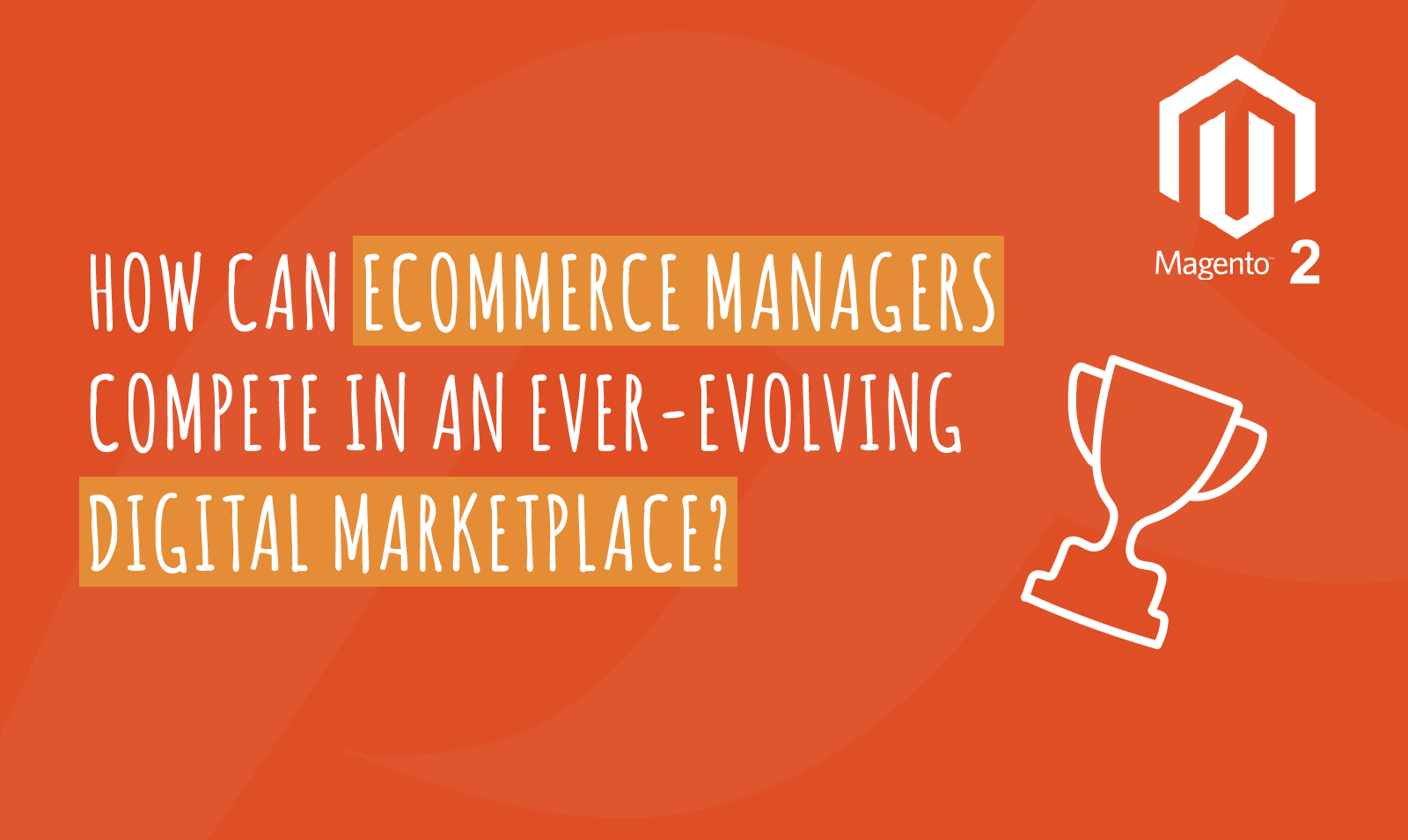
Much has changed in 2020, changes have come at us thick and fast, seemingly affecting every facet of life. The way we live, the way we work, the way we interact, the way we behave online and the way we shop have all changed to some degree or another.
Aside from the disruption to almost every facet of everyday life, these seemingly ‘time lapse’ changes, that have taken place in such a short amount of time, have had a knock-on effect in nearly every industry and business type too. As digital marketers and ecommerce sellers, we have had to relearn from the beginning, as what was once known is now changed or changing. We’ve seen audience behaviour altering as the effects of the COVID-19 pandemic, the ensuing economic downturn and the various geo-political events going on around us unfold.
It is down to us to keep the channels open, to understand how our audience has shifted, what they are looking for from us and what they now expect from their online shopping experiences. Not only that but the perception of brands has shifted under the glare of the pandemic and consumers are now looking for different social and personal cues from the brands they interact with and choose to buy from. Given that COVID-19 has arguably changed consumer behaviour for the long-term, if not permanently, it is business that will have to change to stay relevant and buoyant.
The buyer-supplier relationship has become more direct, more personal and the consumer is directing it, expecting friction free, rewarding and helpful experiences online. So, knowing that, how do you, as an online retailer, keep up?
Changes in Advertising Spend, Online Sales & Investment
In order to fully understand how things have changed this year, it is helpful to review a few statistics around online spend.
Global Advertising Spend
Pre-pandemic, things were already changing, when online advertising spend overtook offline spend for the very first time in early 2019 (data from eMarketer, Feb 2019). That trend has not slowed, and the same study predicts that digital ad spend will account for over 60% (an approximate value of $333.25) of total media spend worldwide by 2023. It adds perspective to understand that in 2000 digital ad spend equated to just 3% of global ad spend, so we are looking at an increase in digital spend of over 57% in just 23 years. It’s clear that retailers and brands are seeing their audiences migrate online more and more, and so see offline advertising as increasingly less effective. Of course, there are other reasons for this, not just the pandemic. For example, changes in TV viewing habits mean that many of us now binge watch, or watch on demand, rather than viewing live programming, skipping adverts as we go and so making them far less useful to brands in terms of awareness generation and revenue.
Online Sales
While COVID-19 has had a dramatic and highly measurable effect on consumer behaviour, that change can also be seen starkly in the data on online retail sales. In Spring 2020, online sales increased as a percentage of all retail sales, from 18.9% in February to peak at 32.8% in May (Data from The Retail Sales Index time series (DRSI)). This shift is perhaps highly logical and predictable after all; if the shops are closed and we’re all staying at home, then how else are we to shop but online? However, even though lockdown has been eased and shops are now open for business again, that online sales figure has remained high, at 26.6%, a full 8.5% up on the same time last year (August 2020 compared to August 2019). These figures suggest that the trend towards online shopping is unlikely to revert to pre-pandemic levels and that a step-change has been made. Supporting this idea is the summer news that Hermes, the delivery and logistics company, are planning to recruit an additional 10,000 new staff in direct response to the increase in demand they are experiencing.
Investment
Interestingly, data from a survey by Marketing Week and Econsultancy suggest that, of 900 surveyed brands, 55% have delayed or held planned campaigns while around 60% are reviewing or delaying decisions on budget commitments. Of course, the other way to look at it is that 45% are ploughing ahead with their campaigns and 40% are not delaying making investment in marketing. It’s worth noting here that, during 2009, whilst in deep recession, Amazon leveraged the growth of online, increased investment and grew its sales by 28%.
How to use this data to your advantage
As ecommerce professionals, this data shows us the vast opportunity out there ready to be leveraged. If consumers, and therefore sales, are moving evermore online, we are already in a better position than those businesses that do not already have an effective online presence that allows customers to interact digitally. It’s not a time to sit back though, competition is only going to increase so now is the time to review and reinforce your position. The challenge now is to make sure that you are aware of who your customer really is – after all those parameters may have changed – and that your business is properly aligned with them.
Ensuring you are absolutely certain who your audience is, researching them minutely so you understand how they think and search, what’s important to them, what their pain points and objectives are and how they want to be helped, is vital in making sure you are properly positioned for the future. There are a number of ways you can develop your customer personas, but the key is to base your assumptions on data and fact, not guesswork.
Once you know exactly who you are talking to, it is possible to plan out and develop your customer journey; making sure that at every stage of that journey your potential customers are finding the answers to their questions on your website. Regardless of whether you sell FMCG or SaaS, your customers will go through the same stages of the journey – Awareness, Consideration, Decision – and will require different information at each stage. If you aren’t providing good quality, helpful, honest content to serve to them at each stage, then someone else will be and your chance of gaining their business diminishes.
When you fully understand the stages your customer goes through, and what content you need to serve at each stage, you may decide that the architecture of your website needs to alter to accommodate it. You should consider how your customers arrive on your site, as they are unlikely to always land on your home page. Do your various landing pages answer the question the customer has searched, is the content helpful, complete and easily accessible? Do you even have topic related landing pages that correspond to the keywords and phrases your customers are searching? Where do they go from those pages, because if it isn’t clear and you don’t tempt them with something else, they are more likely to just leave the site at that point. How does your site funnel and drive visitors to convert, be that a purchase, a sign up or a download?
Spending time thinking about what you want people on your site to actually do, and then about the user journey through your site, user experience (UX) and your user interfaces (UI), i.e. forms and checkouts, is time very well spent and will help you remove friction from the buying process.
The Changing Audience
In seeing existing consumer behaviours change in response to the pandemic, we have also been challenged to address the way we predict the path that change will follow into the future. We’ve seen the rise of new social media platforms, as well as a number of other communication platforms, designed to bring people together digitally when they can’t be together physically. None of that is a surprise in response to a period of enforced separation. However, what has really caught the digital world unawares is the rapid and unforeseen change in the consumer.
In the last 2 quarters particularly, we have seen consumers who are traditionally only associated with offline consumption, drawn online in order to maintain contact with the world, manage their day to day lives and also achieve social and human connection to alleviate isolation. This enforced migration to digital has presented ecommerce and digital marketing professionals with not only a new and expanded potential market, but also new challenges. How best to talk to these people, engage them, help them navigate and find what they want, but also how to reassure them sufficiently that they convert?
It is interesting that, in a global survey this year related to lockdown, Kantar found that 78% of consumers believed that companies held a responsibility to help their customers in their everyday lives. 75% thought that brands should communicate with them about how they were managing the effect of the pandemic and 19% thought that businesses should be doing more to support customers, while 74% believed that companies should actively avoid any manipulation of the global crisis for business gain. At odds with that, 30% felt that businesses should be offering more discounts in response to the pandemic.
There are some clear messages to be drawn from those figures, but the plainest is that consumers expect to be central to how businesses behave. We are racing rapidly away from retailer led business and flying ever faster toward entirely customer-centric business practices. Customers are aware of the power they hold and so demand more from the brands they interact with and potentially buy from. All this serves to bring us back again to the concept that, by delivering what the customer is looking for in their buying journey, we are more likely to engage them, develop a relationship with them and so ultimately, be the brand they choose to buy from when the decision is made. All this is part of the Inbound Marketing methodology, a concept that puts the customer front and centre and relies on drawing the customer to the brand in a targeted way rather than merely scatter gunning messages outwardly hoping that some of them stick.
What Do Your Customers Value?
One of the most interesting revelations around the effect of lockdown is that it has resulted in big changes in what people value and therefore their needs. An agile brand will be able to adapt quickly to these changes and gain market share. Research from Global Web Index’s Coronavirus multi-market study has shown, amongst many other things, that younger consumers with income to spend, are now more interested in the reliability and speed of delivery rather than if delivery is free, and they are willing to look further to find a company who can meet this need. Understanding trends like this can help brands move quickly to meet the changing needs of their target audiences, and because people talk, share and feedback like never before it can also help them grow and gain market voice as well as market share.
Communication
The pandemic, and lockdown in particular, had a curious and very visible effect on the way brands communicated with their customers. Suddenly, big corporate brands that had always previously been faceless became personal, introducing members of staff, showing a human and empathetic face. Moving from ‘Here is why we’re so great and why you should buy from us’ to ‘We’re here for you, we’re people too and we’re doing our best to be there for you’. That shift was clearly a response to the change in perception from consumers, who no longer felt part of things but more isolated, alone and looking to the brands they rely on to acknowledge that.
Ensuring that your style of communication matches the requirements of your audience(s) at each stage of their journey, but also remaining sensible of mood and tone, will help you develop and enhance the relationships you build with your customers, further engaging them and to leave your sales funnel not only to return again, but to bring others with them. Happy, engaged and content customers can be your greatest acquisition tool.
This theory doesn’t just apply to how brands relate to their customers. Customers are also interested in how brands align with their own personal values and are looking to spend their hard-earned income in a way that matches their moral stance too. As people become more and more concerned with their personal impact on the environment, they are looking to retailers and brands to echo that concern and make it easier for people to buy from them in good conscience. The Global Web Index study referred to above also showed that 51% of respondents feel reducing their personal environmental impact is much more important to them than it was pre-COVID-19 (compared with 32% pre-crisis).
Brands that use data to attune themselves to how their audience feels about social, environmental, ecological, political and moral issues, will more easily engage with those people. Understanding how consumer behaviour is changing, committing to make change in order to align your brand with that change and taking a 360-degree view of your digital marketing from technical SEO to content, will give you the head start you need to prosper in these unprecedented times. Just being part of the conversation is key, look at how Ben and Jerry’s took a stance on asylum seekers against the British Home Secretary in August. It’s unlikely that that was a revenue-based decision for them, but one that demonstrated their integrity and humanity, earning them huge respect and attention along the way.
The Evolution of Mar-tech
It is ever the case that necessity is the mother of invention, and that plays out in the evolution of evermore tools to assist digital marketers and ecommerce professionals in marketing effectively online. There are many to choose from depending on the information that is required, for example, Google Trends has come into its own this year as it shows how often a term is searched for in Google. Although it only analyses past data and so is solely backward looking, it can help marketeers spot trends and opportunities as well as changes in consumer search behaviour. It is also a useful tool in helping to create and shape an effective content strategy. There is also answerthepublic.com that can deliver data on searches around a specific topic, for example, the results below show what is delivered for a simple search on ‘ecommerce’.

How is your site performing?
These customer facing tools are not the only ones that offer useful insight and clarity to help define your strategy. After all, it’s no good delivering all the content your customers need if your website is not operating efficiently and search engines don’t rank it or serve your content in searches. You could be delivering the perfect product/service but if no-one knows you’re there then you won’t have achieved anything.
There are a range of tools that will help you benchmark your website’s efficacy and performance, they include SEMRush, testmysite, MOZ and many others. Areas to analyse and assess include:
- Tracking and Analytics: making sure your tracking and analytics are properly set up and filtered, with goals and a purchase funnel etc.
- Organic Search: benchmarking traffic growth against your sector, looking at organic traffic source and how much of your total traffic it makes up, looking at organic traffic for branded terms and non-branded terms and tracking social revenue.
- Technical factors: Consider your website score in Google Page Insights, Google Search Console percentage of warnings etc, Do you have a valid sitemap.xml? What pages get the most traffic? Do you have an up to date Disavow file? Is your content detailed and original enough? How often do you publish new content?
- Paid search: Do you understand your Customer Lifetime Value (CLV)? How profitable are your paid campaigns? Are your non-brand paid campaigns profitable? Do you have dynamic remarketing running? What optimisations do you use? Do you A/B test your landing pages regularly?
- Engagement and conversions: What metrics do you use to measure engagement? Do you display reviews and testimonials across your site? Do you track conversion rate and is it greater than your industry benchmark?
This is just a short and incomplete summary of what to look for, but it is illustrative in indicating the numerous factors and metrics to take into account when looking at the efficacy and performance of your ecommerce website. It is worth healthchecking your site thoroughly and dealing with any issues that arise so you can be sure that your investment in time and budget is being leveraged as fully as possible in terms of revenue and bottom line results.
Facing the Future – Growing Your Brand
2020 has presented challenges never before encountered since the advent of established digital marketing. We have never sought to find a way through a situation like this with such access to detailed data on how our customers are reacting. Even in the ‘Great Recession’ of 2008/9 social media was still in its infancy and many of the data analysis tools we have today were either non-existent or not as evolved as they are today. As digital marketers and ecommerce professionals, we are uniquely placed to watch how global buyer behaviour is changing, both from the effects on our sales but also in the data that is being generated to help us counter those effects.
The challenge is to use that unprecedented data to benefit our businesses and our customers. Now more than ever our role is to understand, invest, pivot and measure.
This guest blog was written by Innovation Visual, digital marketing experts, for SCommere Mage.






